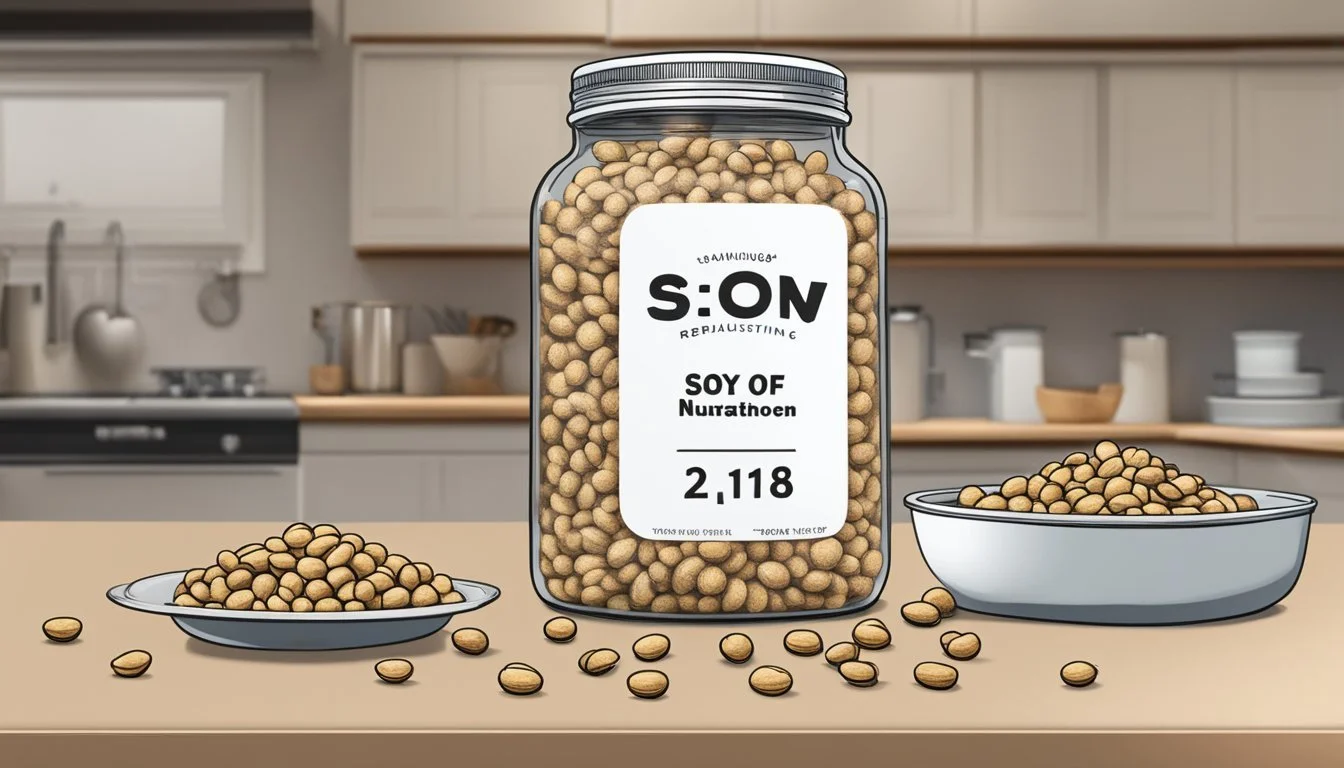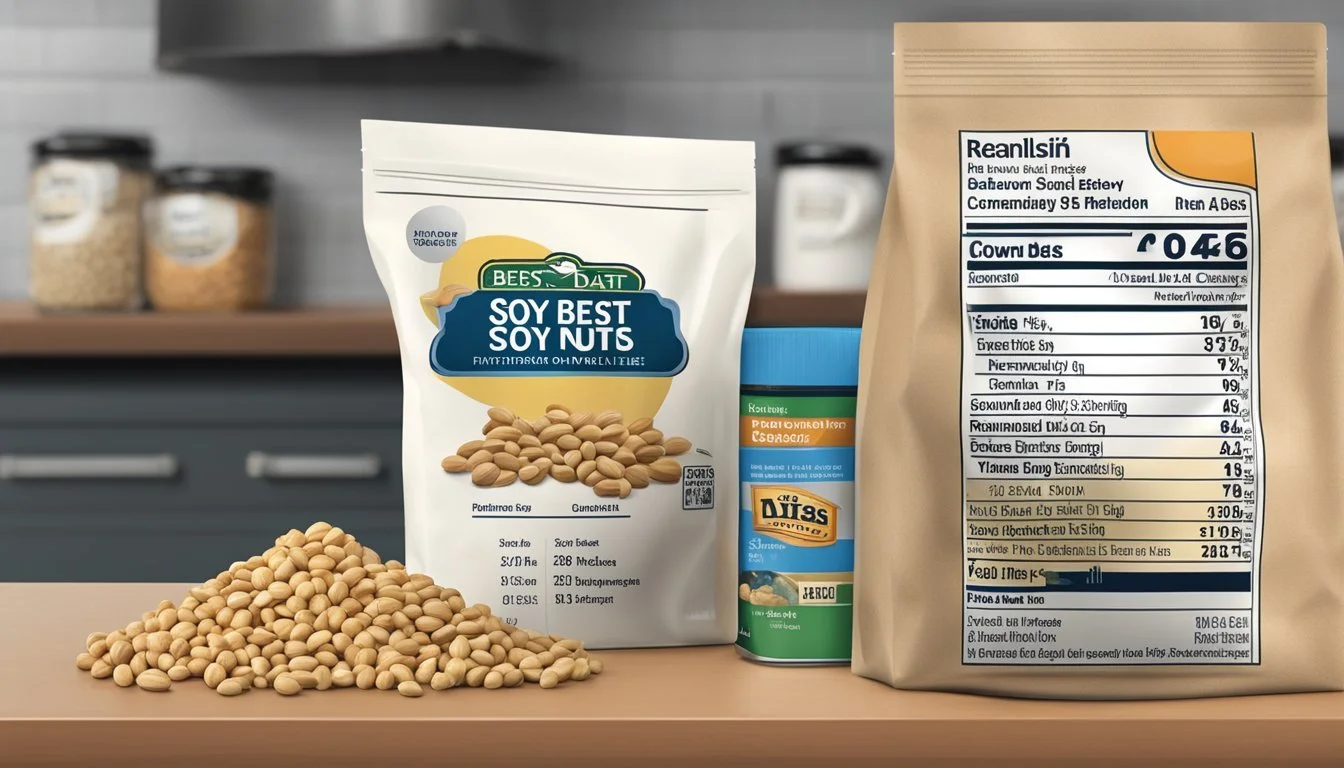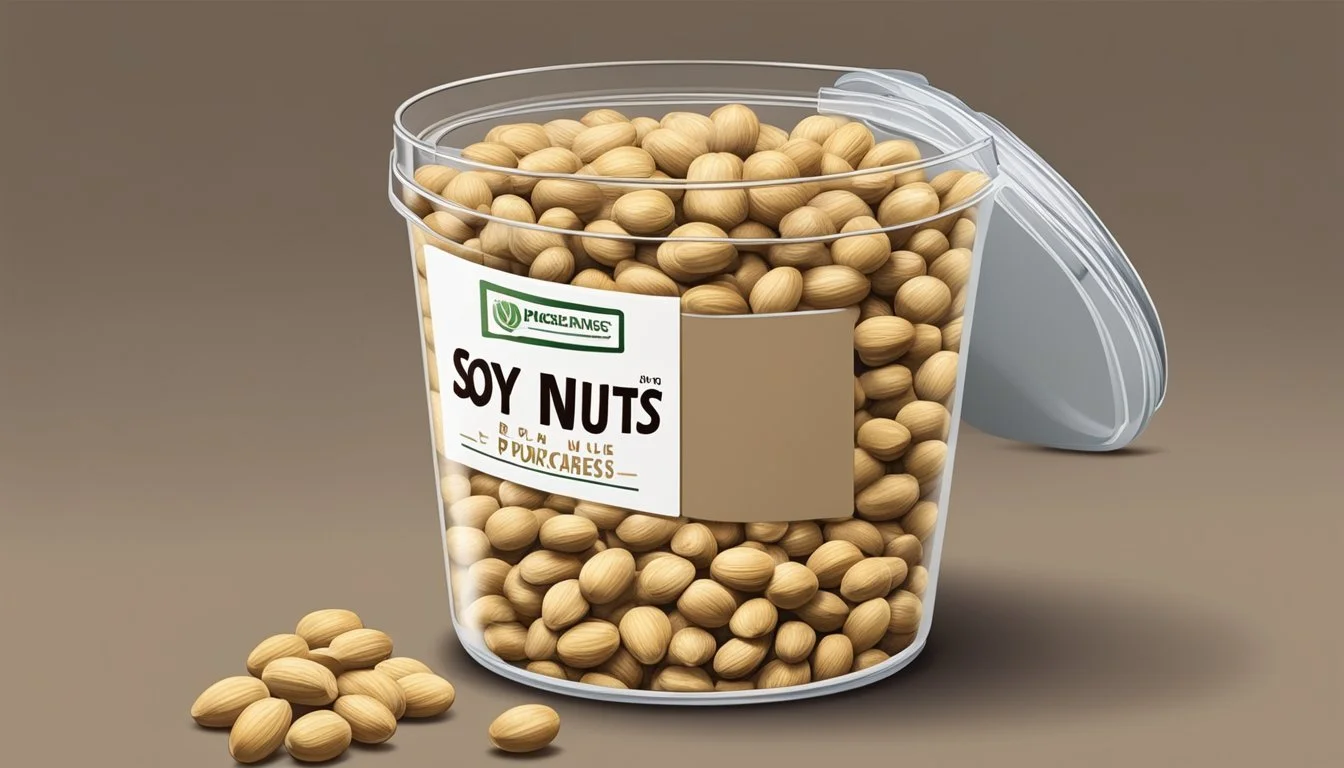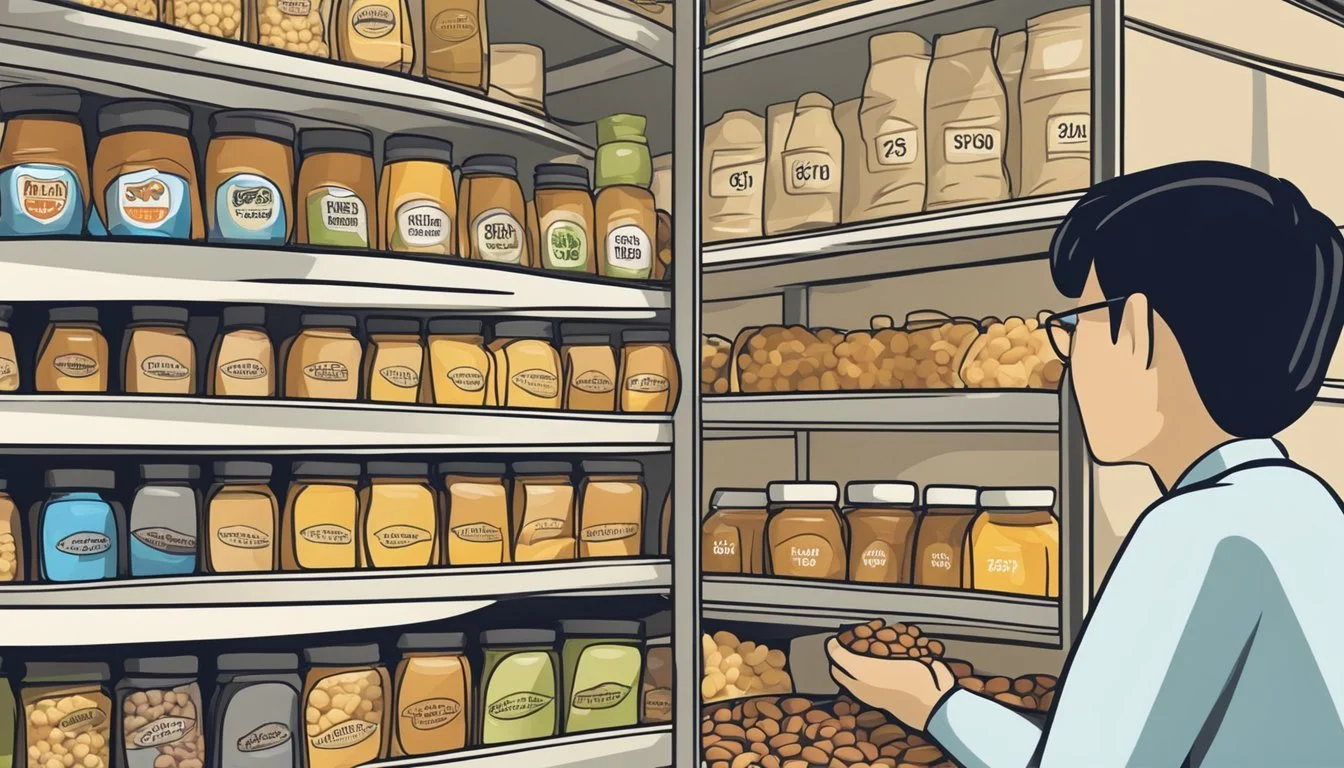How Long Do Soy Nuts Last?
Understanding Their Shelf Life
Soy nuts, (What wine goes well with nuts?) often considered as a nutritious snack, are not true nuts but rather roasted soybeans (how long do soybeans last?) that offer a crunchy texture similar to nuts. These legumes are well-regarded for their health benefits, including improving heart health, due to their high protein content, fiber, and isoflavones. Understanding the shelf life of soy nuts is essential for consumers who wish to enjoy their nutritional benefits while ensuring they consume them at their best quality.
The shelf life of soy nuts is influenced by various factors such as their packaging, storage conditions, and whether they are flavored or coated. Typically, unopened and properly stored soy nuts can last for several months, and their longevity may even extend past the printed expiration date if they are kept in conditions that limit exposure to heat, moisture, and light. Once opened, maintaining freshness becomes a matter of sealing them effectively and storing in a cool, dry place.
For those looking to incorporate soy nuts into their diet, it's crucial to be aware of the indicators of freshness and signs of spoilage. Fresh soy nuts are firm and have a crisp texture, whereas rancidity, often characterized by a distinctive off-smell or change in taste, signals that the nuts are past their prime and should no longer be consumed. To maximize the shelf life and quality, consumers should keep soy nuts in airtight containers after opening and consider refrigeration to further extend their usability.
Understanding Soy Nuts
Soy nuts are not true nuts but rather roasted soybeans that provide a crunchy and nutritious snack. They are an excellent source of protein, making them a popular choice for vegetarians and vegans seeking to boost their protein intake. With a substantial amount of fiber, soy nuts aid in digestive health and can contribute to a feeling of fullness, potentially supporting weight management efforts.
In terms of nutritional content, soy nuts are rich in fatty acids, particularly the unsaturated kind, which are known to support heart health. They are low in saturated fat, which helps in maintaining lower cholesterol levels. The presence of antioxidants in soy nuts also offers cellular protection against oxidative stress, which might otherwise lead to inflammation and disease.
The health benefits associated with consuming soy nuts are varied. They have been associated with improved cardiovascular health, likely due to their profile of fats, fiber, and protein. As a soy product, they carry the potential benefits of soy foods, which may include hormone regulation due to their phytoestrogen content.
When considering soy nuts as a food choice, it's essential to be aware of allergies; soy is a common allergen and may not be suitable for everyone. Despite their beneficial properties, they should be consumed in moderation as part of a balanced diet.
Nutrients in Soy Nuts Benefits Protein Muscle repair Fiber Digestive health Unsaturated fats Cardiovascular health Antioxidants Cellular protection
Soy nuts provide a blend of taste and nutrition, making them a valuable addition to one's diet.
Shelf Life Fundamentals
The shelf life of soy nuts is dictated by various factors including storage conditions and the presence of natural oils which can turn rancid. Understanding the importance of expiration dates and identifying signs of spoilage are key to ensuring the quality and safety of the product.
Factors Affecting Shelf Life
Soy nuts, like other nuts, contain fats that may become rancid over time due to oxygen and light exposure. Temperature and moisture are critical factors as well; thereby, storing soy nuts in a cool, dry place can prolong their shelf life. Typically, shelf life can be categorized as:
Pantry: Up to 3 months for the best quality
Refrigerator: Up to 6 months
Freezer: Up to a year if stored properly to minimize exposure to air and moisture.
Expiration Date Significance
The expiration date or best by date on a package of soy nuts serves as a manufacturer's estimate for peak quality. It is not an absolute indicator of safety but rather a guideline:
Best By: Indicates when the product may begin to decrease in quality.
Expiration Date (if listed): More commonly reflects a potential decline in both quality and safety.
Identifying Spoilage Signs
Soy nuts should be checked regularly for signs of spoilage, which include:
Odor: A sharp or bitter smell can indicate that the nuts have gone rancid.
Taste: A noticeable change from the nut’s natural flavor can also signify rancidity.
Mold: Visual inspection for mold growth on the soy nuts is crucial, as this poses a health risk.
Texture: Any change in texture, such as a spongy or damp feel, can suggest moisture intrusion, which leads to spoilage.
By closely monitoring these factors, one can ensure the safe consumption of soy nuts and prevent the intake of spoiled goods.
Proper Storage Techniques
To ensure optimal freshness and shelf life of soy nuts, employing proper storage techniques is crucial. These methods will maintain the quality and nutritional value of the nuts.
Home Storage Solutions
For immediate consumption, soy nuts should be kept in an airtight container and placed in a cool, dry area such as a pantry. Exposure to heat, moisture, and light can accelerate the degradation process, so finding an environment that minimizes these factors is key to prolonging shelf life.
Pantry: Airtight container; cool, dry location away from sunlight
Fridge: If not consumed quickly, refrigeration in an airtight container can help extend freshness.
Extending Shelf Life
To further extend the shelf life of soy nuts, one can freeze them. Freezing soy nuts in an airtight container or freezer-safe bags can protect them from freezer burn and the absorption of odors from other foods. This method is particularly useful for long-term storage.
Freezer:
Seal in airtight containers or freezer-safe bags.
Label with date of storage to track freshness.
By closely monitoring the conditions in which soy nuts are stored, their shelf life can be significantly maximized.
Effects of Improper Storage
Improper storage of soy nuts often leads to a decrease in their quality and shelf life. When exposed to warm temperatures, moisture, and light, soy nuts can become rancid due to the oxidation process of their natural oils. This rancidity not only imparts an unpleasant taste and odor but also diminishes their nutritional value.
Moisture is particularly detrimental as it encourages mold growth and bacterial proliferation. Mold growth can be spotted by visible changes on the surface of the nuts, while bacterial contamination might not be as easily noticed but can lead to food-borne illnesses.
Temperature: Storing soy nuts at temperatures above the recommended range accelerates spoilage.
Light: Exposure to light can catalyze the oxidation of fats, leading to rancidity.
Air: Oxygen from the air reacts with fatty acids in soy nuts, contributing to their spoilage.
To preserve the quality of soy nuts and prevent spoilage, they should be stored in airtight containers away from light and heat. Ideally, soy nuts should be kept in a cool, dark place like a pantry. For extended storage, they can be refrigerated or frozen to significantly slow down the degradation process.
Consumption and Safety
When it comes to the consumption and safety of soy nuts, the primary concerns involve the evaluation of quality and potential health risks associated with eating expired nuts.
Health Risks of Expired Nuts
Soy nuts that have passed their expiration date may pose health risks if their quality has deteriorated. They can develop an off odor or taste that indicates rancidity or spoilage. Consuming rancid nuts can lead to gastrointestinal discomfort, including nausea, vomiting, and diarrhea. Additionally, individuals with allergies have to be extra cautious as the breakdown of oils in expired nuts may lead to unexpected allergic reactions.
Quality Assessment Before Use
Before consuming soy nuts, one should perform a quality assessment to ensure they are safe to eat:
Expiration Dates: Always check the expiration date, but remember that soy nuts can last beyond this period if stored properly.
Odor: A smell test can detect rancidity. Fresh soy nuts should have a nutty, pleasant aroma, not a sharp, unpleasant odor.
Taste: If they pass the smell test, taste a small piece. Any sour or unpleasant taste is a clear sign not to consume.
Visual Inspection: Look for any signs of mold or unusual appearances that could indicate spoilage.
By performing these assessments, consumers can make informed decisions about the safety of consuming soy nuts.
Utilizing Soy Nuts in Cooking
Soy nuts, a crunchy and nutritious ingredient, offer a versatile use in a variety of dishes. They are not true nuts but are made by soaking soybeans and then roasting them until they have a nutty texture. Roasting is key to enhancing their flavor and can be achieved with a simple preparation.
Ingredients for Roasting:
1 cup soybeans
1/2 teaspoon salt
1 teaspoon olive oil
Seasonings (optional): cajun spices, to taste
Roasting Directions:
Soak soybeans for 8-12 hours in water, making sure the beans are fully submerged as they will expand.
Drain and rinse the beans, then pat dry with paper towel.
Preheat the oven to 350°F (175°C).
Toss the soybeans with salt, olive oil, and optional seasonings.
Spread the soybeans on a baking sheet and roast for 35 minutes or until golden and crunchy, stirring occasionally.
Once roasted, soy nuts can elevate the flavor profile of a dish or be enjoyed as a standalone snack. They can be incorporated into a homemade trail mix, blended with dried fruits (What wine goes well with dried fruits?), and other nuts for a healthy and satisfying snack. These nuts are also an excellent topping for salads, adding a delightful crunch and a protein boost.
They are versatile enough to use as an ingredient in other culinary applications. Ground into a fine flour, they can be used for gluten-free baking or as a thickener for soups and sauces.
In summary, soy nuts are a delicious and healthful addition to traditional cooking, giving a nutty crunch to various dishes and providing a plant-based protein source.
Soy Nuts and Health
Soy nuts play a vital role in promoting health, offering significant amounts of protein and fiber, and being rich in antioxidants and unsaturated fats. They are often considered as a heart-healthy snack due to their potential to lower cholesterol levels.
Nutritional Impact
Soy nuts are a nutritious choice largely because of their protein content, which is essential for muscle repair and growth. Each serving of soy nuts boasts a high fiber amount, promoting digestive health and satiety. The antioxidants in soy nuts can help defend against cellular damage, while their unsaturated fats are known to be beneficial for heart health. They contain little to no cholesterol, which aligns well with a diet aimed at preventing heart disease.
Incorporation in a Balanced Diet
One can easily include soy nuts in a balanced diet by using them as a substitute for less healthy snacks. They can also be incorporated into meals, such as:
Nut butter: Soy nuts can be ground into a butter and spread on toast or added to smoothies.
Tea: Soy nuts can be blended and stirred into tea for added flavor and nutrients.
Cereal/Oatmeal: A sprinkle of soy nuts adds a crunchy protein and fiber boost to breakfast cereals or oatmeal.
Offering versatility as well as health benefits, soy nuts can be an excellent addition to one’s dietary routine.
Shopping and Selection Tips
When purchasing soy nuts, consumers should consider several factors to ensure they select a quality product that will last as long as possible. Here are some tips to keep in mind:
Type of Nuts: Choose soy nuts that are evenly roasted and have minimal to no discoloration. Freshness can be indicated by a crisp texture and absence of any rancid smell.
Packaging: Opt for vacuum-sealed bags or tightly sealed containers. Packaging should have minimal air and be intact without any punctures or tears.
Storage Indications: Look for packaging with clear storage instructions and a best-by or expiration date. Manufacturers often provide optimal storage conditions to maintain freshness.
Bulk Bins versus Pre-Packaged:
Bulk Bins: While they can be more cost-effective, buying soy nuts from bulk bins at the grocery store can involve risks. It's challenging to determine how long the nuts have been exposed to air and the turnover rate of the bin contents.
Pre-Packaged: Pre-packaged soy nuts might offer a safer bet for freshness and longevity, as they are less exposed to the environment and the packaging is often designed to extend shelf life.
Grocery Store Selection: Choose stores with high product turnover to increase the likelihood of buying fresher soy nuts. These stores are more likely to stock fresh goods due to frequent restocking.
By keeping these shopping and selection tips in mind, consumers can confidently purchase soy nuts that are fresh and will last longer when properly stored at home.
Miscellaneous Insights
When considering the shelf life of soy nuts, their freshness is paramount. Soy nuts are not true nuts but rather legumes that have been soaked, dehydrated, and roasted to attain a crunchy texture akin to nuts. This process affects their longevity and safe consumption window.
Storage Methods:
Pantry: A cool, dry place can preserve roasted soy nuts for up to one year.
Refrigerator: Refrigeration can assist in extending their shelf life slightly beyond the pantry due date.
Freezer: Freezing soy nuts could potentially extend their edibility, but this is less common.
Factors Influencing Freshness:
Packaging: Airtight containers or vacuum-sealed bags prevent moisture and oxidization, two primary causes of spoilage.
Roasting: Roasted soy nuts may last longer than their unroasted counterparts due to reduced moisture content.
Health Considerations: Consumers often choose soy nuts as a healthier snack alternative for their protein content and lower fat profile compared to traditional nuts. However, one should always check for any off smells, discoloration, or mold, which indicate that the soy nuts are no longer safe to eat, regardless of the stated shelf life.
Quick Reference Table:
Storage Method Expected Shelf Life Pantry Up to 1 Year Refrigerator Slightly over 1 Year Freezer Not Commonly Recommended
In summary, while the process of roasting can enhance the durability of legumes-like soy nuts against spoilage, proper storage is essential to maintain their freshness and health benefits. Always inspect the soy nuts before consumption and adhere to recommended storage practices for optimal quality.










